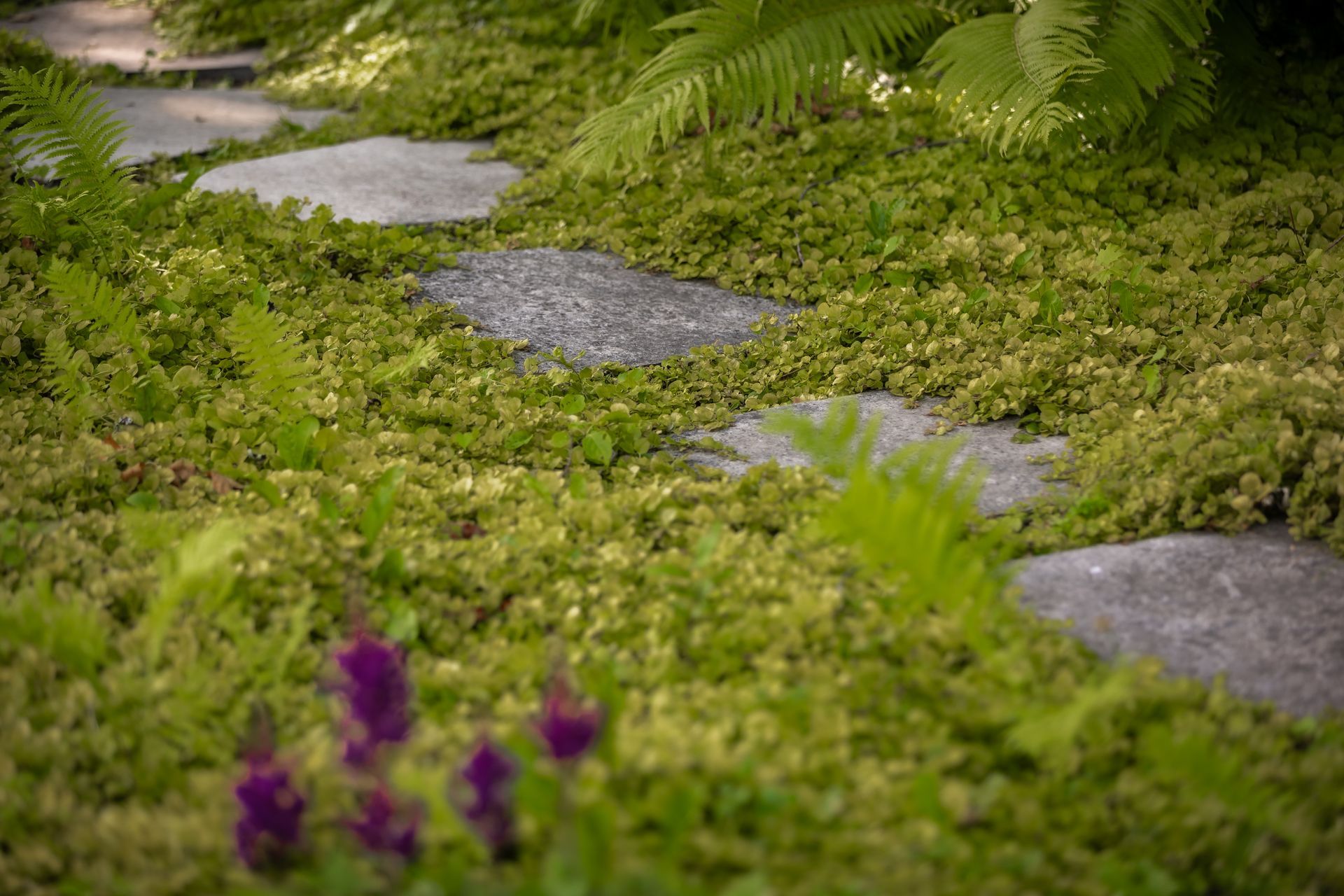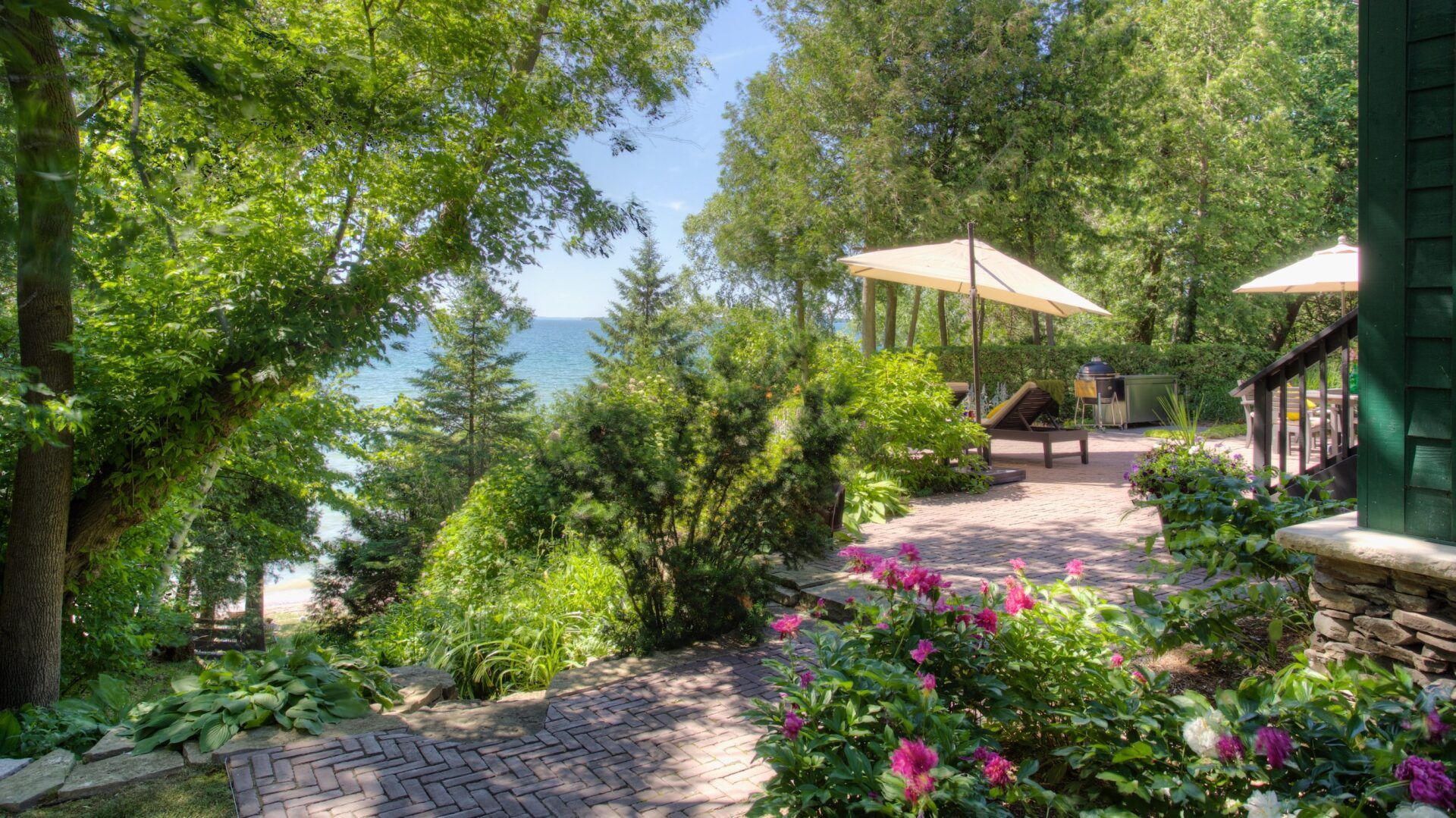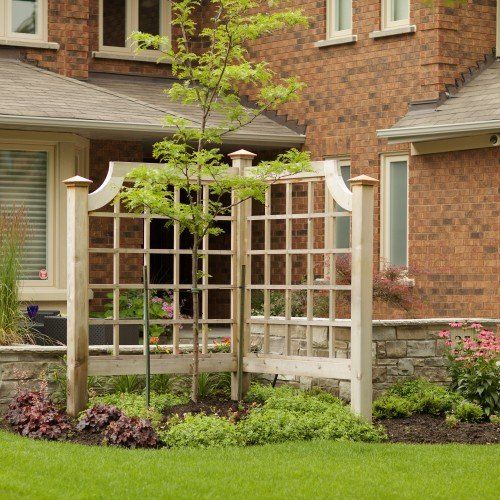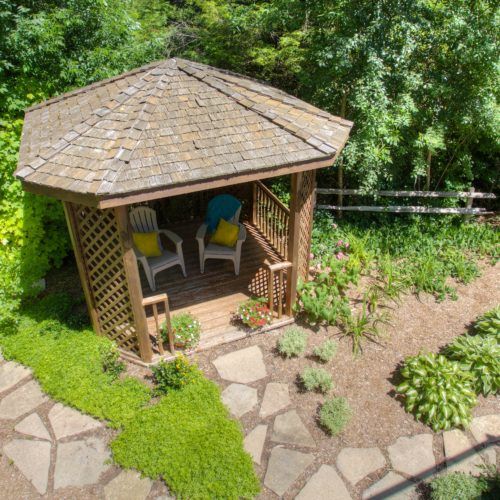Lawn Alternatives
Replacing your lawn can be beneficial to you, your health and the environment.
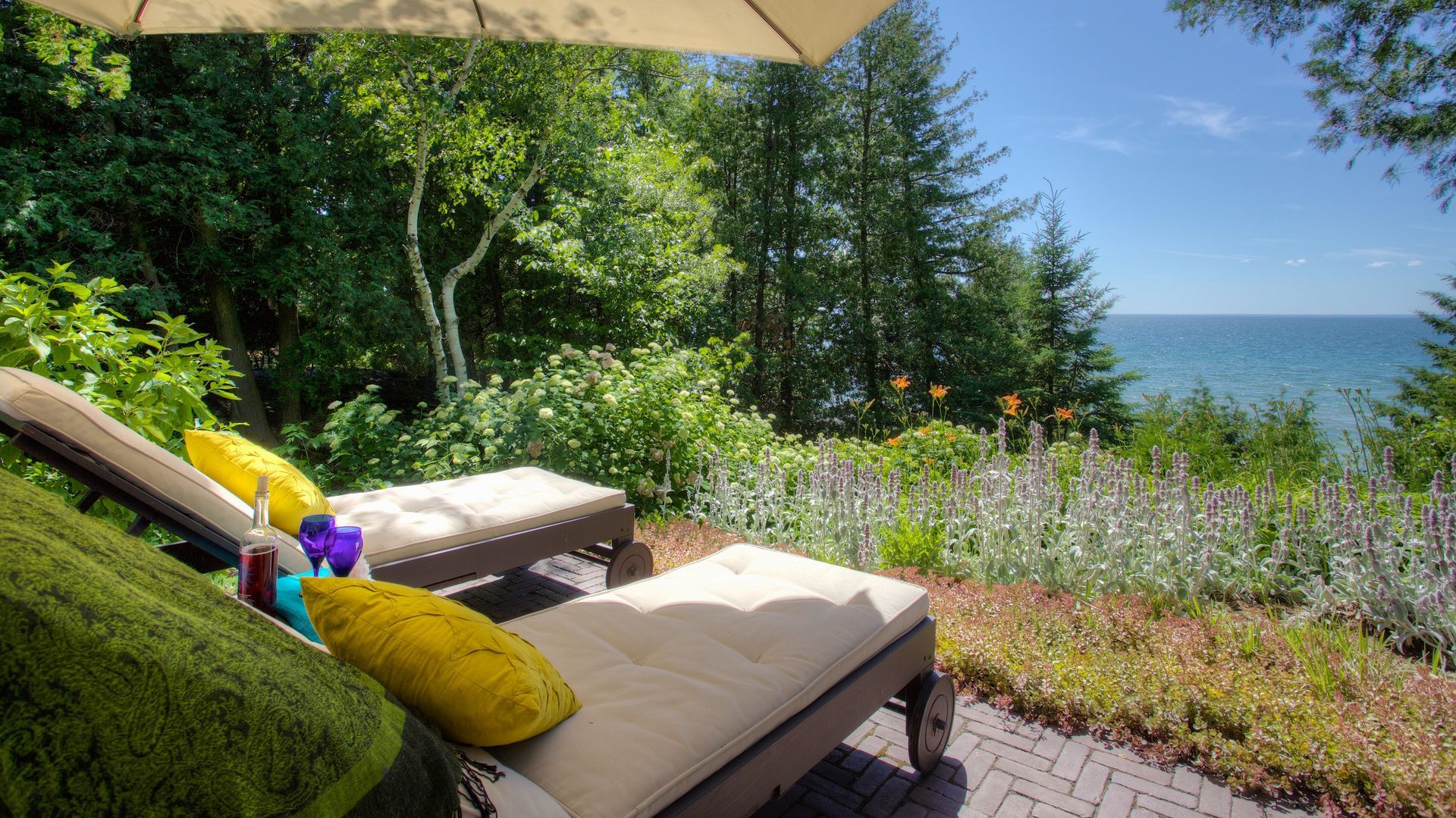
Consider this year changing an area of lawn to some alternative landscape options such as groundcover, herb lawn or wildflower meadow bulb garden.
The first question to ask is, how much lawn do we really need? What areas do you need for playing games, picnics, traffic routes, play sets and sitting areas to enjoy our gardens? Our mown areas are usually greater than we ever use and are often in areas that are hard to maintain such as under trees, slopes and on septic tile beds.
There are several options available as alternatives to mown grass:
· Groundcovers/herb lawn
· Wildflower meadows
· Woodland garden with bulbs under shady trees or mulch carpet
Groundcovers are an excellent option as plants which spread by runners will fill an area faster than single or clump forming plants. It is advised to choose groundcover on leaf texture and colour.
Evergreen groundcovers look green all year round and offer protection from soil erosion. Groundcovers are excellent for dry shady sites, shaded slopes sunny areas and areas difficult to mow. As groundcover has a dense growth habit, it restricts weed growth.
Soil preparation is essential for optimum groundcover establishment and growth. Remove sod, till deeply and add organic amendments. Place plants 6-10” apart.
Dry Full Sun – Bearberry (N), Viola(N), Sedum, Thyme, Wild Strawberry (N)
Moist Shade – Bloodroot (N), Bunchberry (N), Ginger (N), Wintergreen (N), Mayapple
Areas with heavy foot traffic can accommodate herb lawns. Thymes and mint are hardy and will withstand activity, while also creating an aromatic benefit, especially on hot day. Herbs are fast growing and perennial varieties will fill in an area in one season. Herb lawns provide a natural look and can be contained with edging. Mint is tough against weeds and needs to be contained, but offers a tight low growing carpet. Creeping wholly thyme offers a low quick growing option. Thyme is good for dry sunny areas and can reduce mosquitos. Chamomile forms a dense carpet. Trimming will only be required if undisturbed.
A wildflower meadow will attract birds, butterflies and other wildlife. Be aware that the species and varieties of plants will enhance the biodiversity of the meadow, so native varieties are encouraged. It is advised to start small when planning a meadow. Choose an area where you can observe and enjoy the wildlife activity. Grasses form the structure of a meadow planting. Meadows are suitable for sloped areas also, especially dry full sun locations. Consider creating mown paths and leave areas of grass to grow tall with over seeding with native wildflowers and grasses. Consider creating mown paths surrounded by taller grass areas or low mow grass varieties.
A woodland area can be created under existing mature trees where grass is difficult to grow. Woodland bulb Gardens Spring bulbs provide an aesthetic in areas where it is difficult to get grass or plants to grow. Spring bulbs are our first signs of Spring, in bloom before the leaves appear and multiply year after year. Also as mowing begins, you can trim them back and return organic matter back into the soil, benefitting soil and bulb. Crocus, Snowdrop, Anemone, Daffodils, Scilla. Bulbs are also easier to plant, as a small trowel can create enough space to plant a bulb. Bulbs should be planted in clumps rather than singularly. Daffodils should be 6” deep, other bulbs 3-4” deep.
Lawns are the most dominant element in our landscapes. However they consume resources and are expensive to maintain. The options above offer alternatives to our traditional lawn, provide localized solutions to problem areas while also enhancing biodiversity on our properties.



